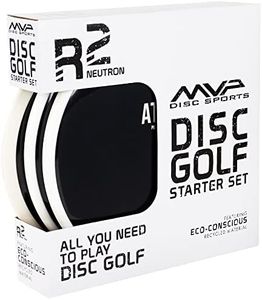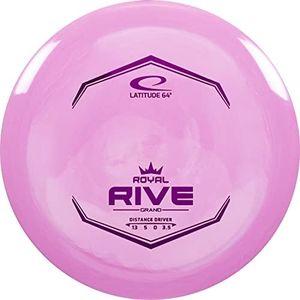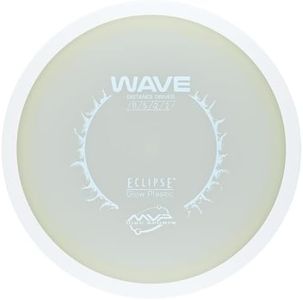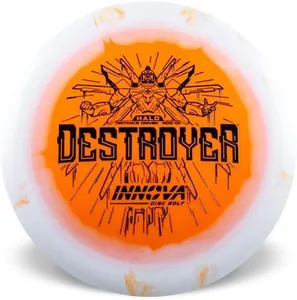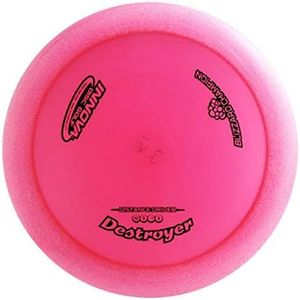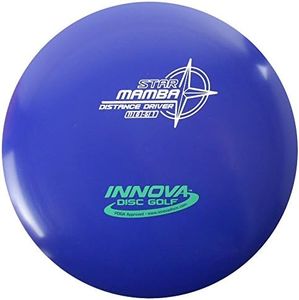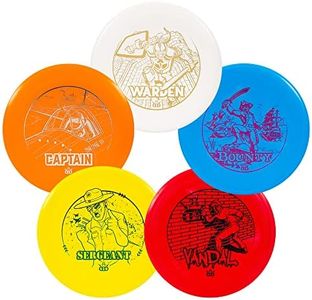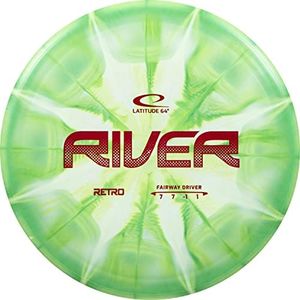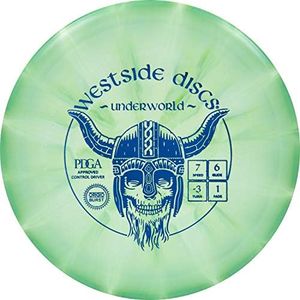We Use CookiesWe use cookies to enhance the security, performance,
functionality and for analytical and promotional activities. By continuing to browse this site you
are agreeing to our privacy policy
10 Best Stable Disc Golf Driver
From leading brands and best sellers available on the web.Buying Guide for the Best Stable Disc Golf Driver
Choosing a stable disc golf driver is all about matching your throw style and skill level with a disc that flies predictably. Stable drivers are designed to keep a straight line for most of their flight, making them reliable for controlled throws. To pick the right one, you need to understand the basic features that influence a disc's flight, such as speed, glide, turn, and fade. Carefully considering these specs will help you select a driver that feels good in your hand and performs consistently on the course.SpeedSpeed represents how fast the disc should be thrown to achieve its intended flight. A higher speed number means the disc is designed to cut through the air quickly, but it usually requires more power to throw properly. Lower speed discs are more forgiving and suitable for beginners or those with less arm strength, while higher speed discs are better for experienced players who can throw with more force. Choose a speed that matches your current throwing power—a moderate speed is a good starting point if you're unsure.
GlideGlide tells you how long a disc can stay in the air. Discs with higher glide will float longer, making them useful for getting more distance, especially for newer players or when you want to maximize your throw. Lower glide discs are better for controlled throws when you want precision over distance. If you're just starting or want extra distance, aim for a disc with higher glide; for approach shots or windy conditions, a bit less glide may be more manageable.
TurnTurn describes how much the disc will curve to the right for a right-handed backhand throw during the early part of its flight. A stable driver will have a turn value close to zero, meaning it won’t veer much in either direction. If you’re worried about losing control, a disc with a minimal turn (between -1 and 1) is best, as it will fly straighter. If you know your throws often drift right (for right-handers), sticking to a low negative or neutral turn value will help keep you on target.
FadeFade describes how much the disc will curve left at the end of its flight for a right-handed backhand throw. More fade means a stronger finish at the end, while less fade results in a straighter path to the ground. For stable drivers, you’ll want moderate to low fade (values from 1 to 3). If you want the disc to finish straight without much curve, look for lower fade; if you want a reliable finish at the end of the flight, pick one with a bit more fade.
Disc WeightDisc weight affects how the driver handles wind and how easy it is to throw. Heavier discs are better in windy conditions and offer more stability, while lighter discs are easier to throw for longer distances, especially for newer players or those without a lot of strength. For most people, choosing a weight in the middle range is a safe bet, but if you find yourself struggling with distance, try a lighter disc; if you play in windy areas, go a bit heavier.

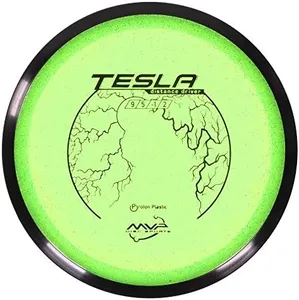
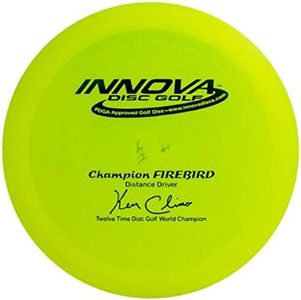
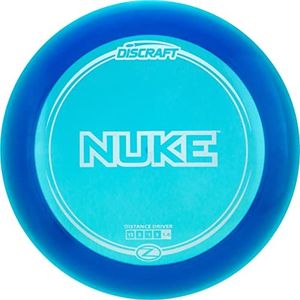
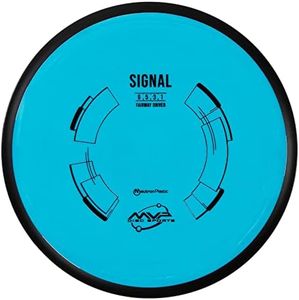
![Latitude 64 Grace (Royal Grand) Distance Driver Golf Disc, Pick Weight/Color [Stamp & Exact Color May Vary] Pink 175-176 Grams](https://images-proxy.bestreviews.guide/ITEzPwJmvpGvFAlXVtFVuE1C-XE=/0x300/https://m.media-amazon.com/images/I/416Z9kr5+SL._AC_CX679_.jpg)
